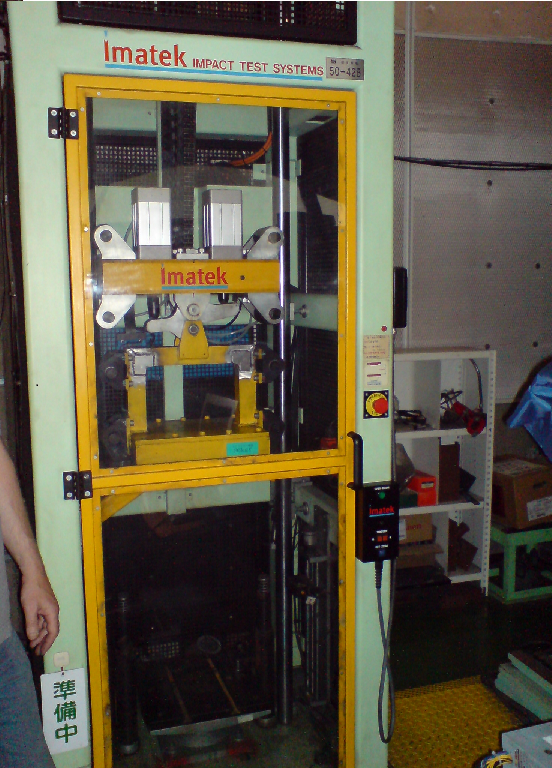Fatigue testing and impact testing are not two regimes that you would necessarily associate with each other, but in fact lots of items in the real world are subject to repeated impacts, and there is most definitely a need to test their endurance.
At Imatek Systems we have been involved in the design of such tests for many years, particularly in the automotive industry. Components of vehicle suspension, engine mounts and cushioning materials are some of the products that we have helped customers test.
In the early days we assumed that a 7-digit counter to record the number of impacts would suffice for the life of the machine. However, the tester shown below has now gone “around the clock” at least twice, performing over 20 million cycles. This particular machine runs almost continuously, hitting each specimen up to 50,000 times.

It almost goes without saying that the impact tester must be extremely reliable, and that every component has to be at least as robust as the specimen being tested. Another consideration is the cycle time, where clearly shorter is better, to complete the required number of impacts in as short a time as possible: our current high-speed testers can perform 8 cycles per minute, which means that a 50,000 impact sequence can be completed in less than four and a half days.
Detecting failures
Another desirable feature which may not be so obvious is failure detection. Long test sequences are commonly run unattended, and there is always the possibility that the component being tested will fail completely. In this case subsequent impacts could result in the impact mass hitting the test fixture, or the base of the machine, with the potential to cause serious damage. For example: it would be possible to check whether the maximum deformation of the specimen exceeded a threshold value.
Recovery time
Another consideration applies when testing materials such as visco-elastic polymeric foams that require a certain recovery time after each impact. In this case, rather than rushing through the impacts as quickly as possible, it is desirable to be able to specify a minimum time between successive drops.
More information
Please Contact us for more information, or check out our IM100 Range which are our instruments most commonly configured for fatigue testing.
